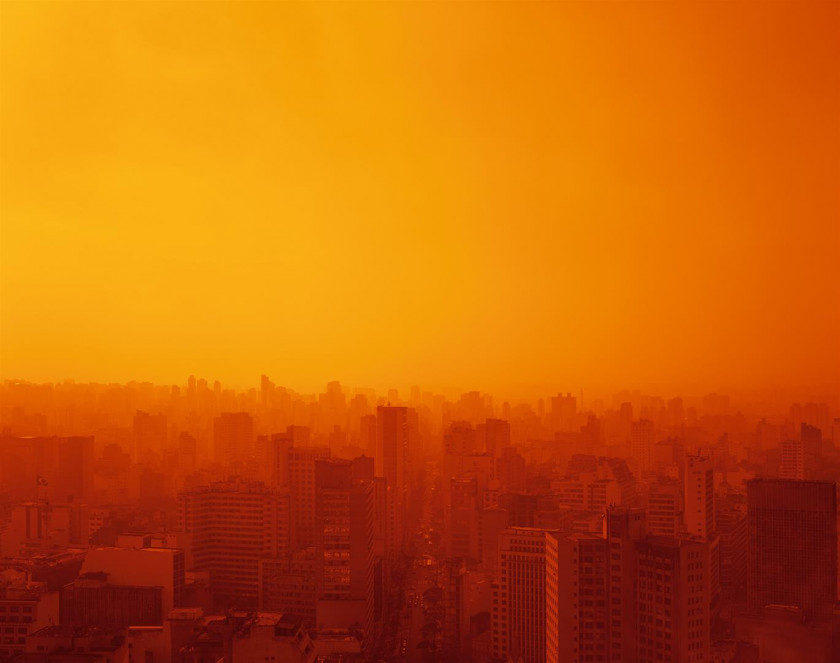Chicago Union Station, Chicago, Illinois
photography
![Chicago Union Station, Chicago, Illinois [Estação Chicago Union, Chicago, Illinois]](https://cms.macam.pt/storage/uploads/thumbs/inarte-work-3100_w840.jpg)
![Chicago Union Station, Chicago, Illinois [Estação Chicago Union, Chicago, Illinois]](https://cms.macam.pt/storage/uploads/thumbs/inarte-work-3100_w840.jpg)
2008
Inkjet print on Fine Art paper
126 x 160 cm
Chicago Union Station is part of André Cepeda’s photographic series entitled River, which was produced in 2008 while travelling across the United States along the Mississippi River. For a period of 28 days, the artist went from motel to motel, moving by car, bus or train, discovering the American landscape, culture and people.
The scenery is set in the Chicago train station, an iconic building from 1925. The image, shot in an extremity of the station’s great Hall, shows the edge of the American flag which is hung from above, inside the massive 20th century neoclassical architecture. Between the fluted columns, under a balustrade, stands an unidentified neon-light vertical object. Facing the neon, a veiled woman sitting on a bench, presumably looking at the bright piece. The general artificial lighting of the space is relatively somber with dark yellowish orange tones, giving the ensemble a desolate, uncanny and almost phantasmagorical character.
Cepeda works from everyday life, capturing the visual manifestations and phenomena around him, producing austere and crude landscapes, interior scenes or portraits devoid of any process of embellishment or moralisation. Through his way of sharing specific circumstances, places, atmospheres, encounters and meaningless details that make the embodiment of the eye undeniable, Cepeda’s series offer immersive experiences to its viewers. Focusing on spatiality, light and frame while conveying senses of emptiness, silence, alienation and loneliness, the artist fuses his own way of living, seeing, feeling and meditating with his photographic wanderings.
The artist does not offer the viewers any narrative. He does not intend to tell stories nor to induce precise emotional responses. Instead, the images he produces come from his acute observation skill, constantly exploring the tension between transitivity and the hypothetical permanence of institutionalised sociocultural strata with their harsh seclusion and marginalisation mechanisms, while turning into flat mysteries the irrelevances of the instant.
Katherine Sirois
